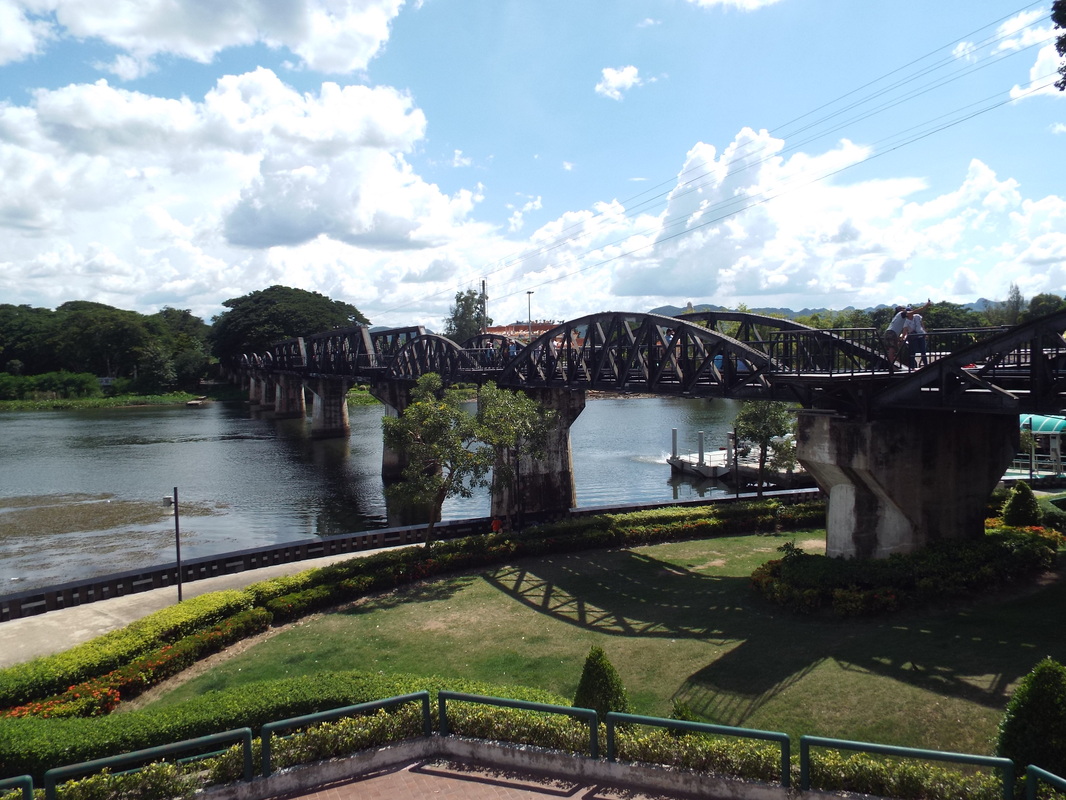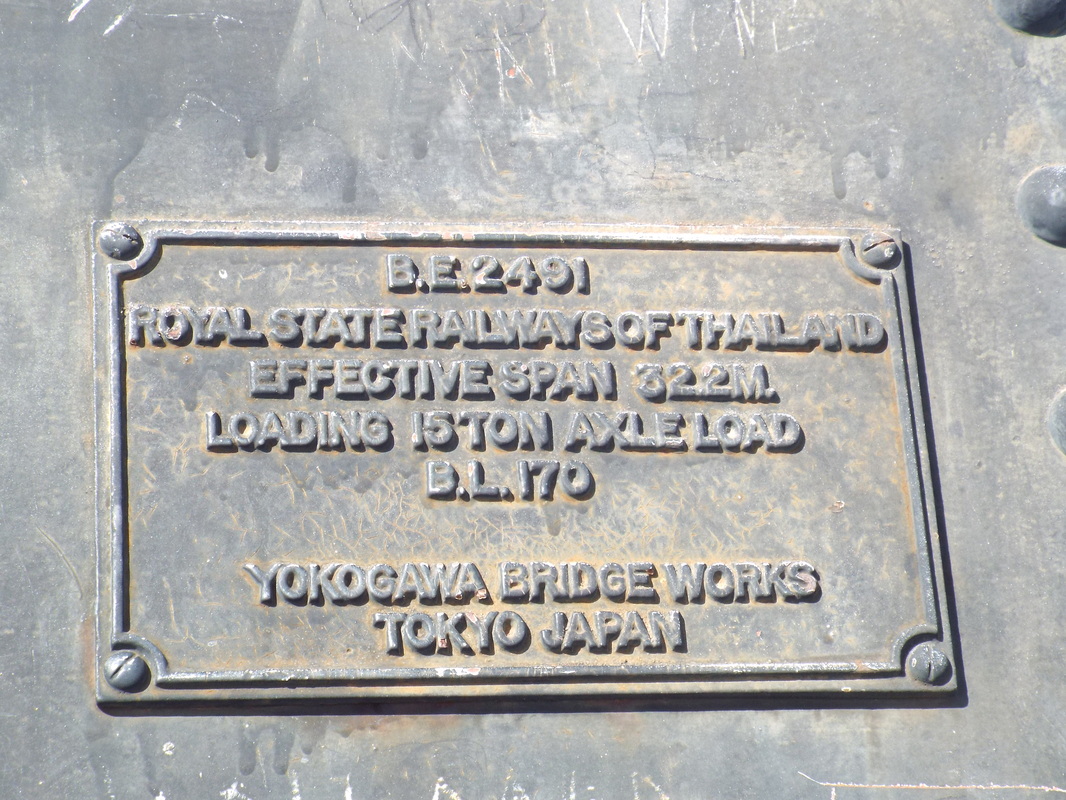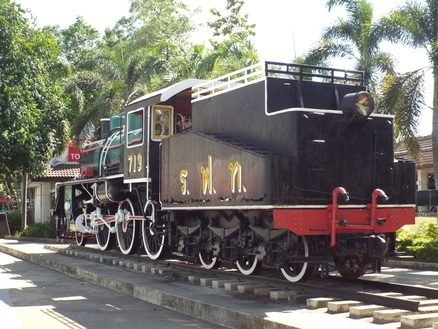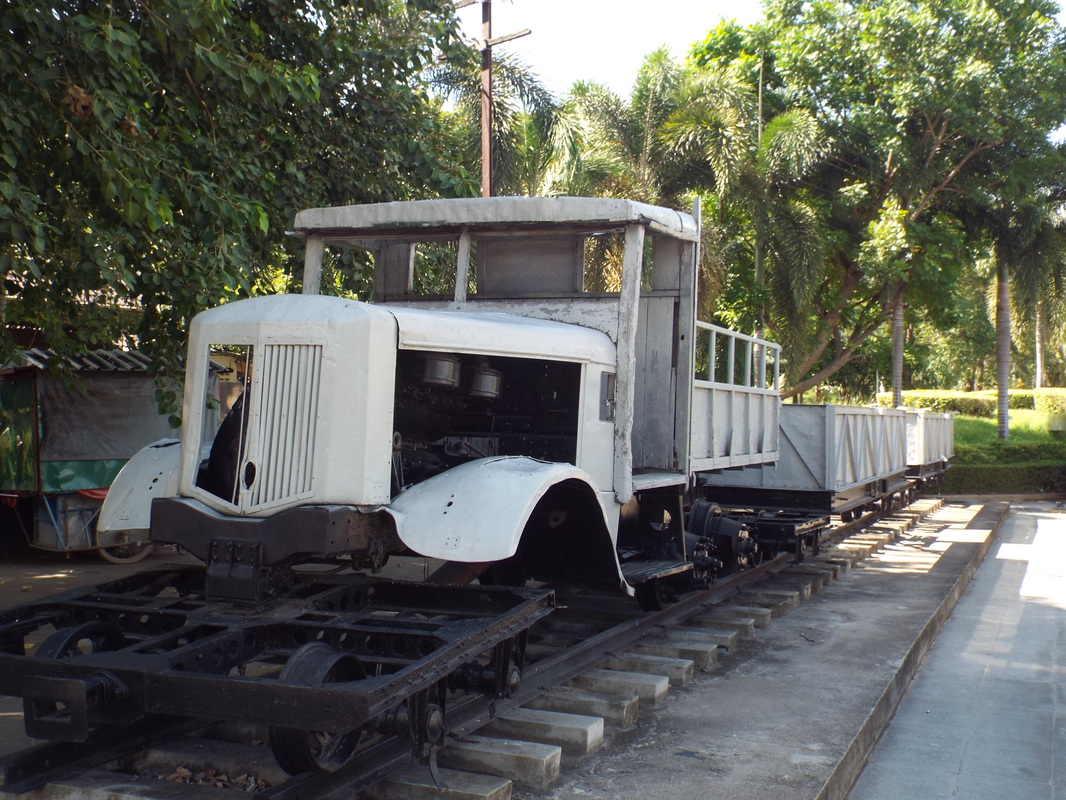When constructed the bridge actually spanned the Mae Klong river, the name of the river was changed in the 1960's to match the book written by Pierre Boulle which was subsequently turned into the famous film - It seems Pierre got it wrong, the fact he never apparently visited the real bridge probably didn't help!
The bridge was constructed by allied prisoners of war and civilians at a place called Tha Ma Kham which is about 5km from Kanchanaburi.
Originally there were two bridges, a wooden bridge which was completed in February 1943 and the steel / concrete bridge seen today which was completed a few months later in June.
The curved steel bridge spans are original, and were brought from Java by the Japanese. The two straight-sided spans come from Japan, and were installed after the war to replace spans destroyed by allied bombing in 1945.
The two bridges were successfully bombed on 13 February 1945 by the Royal Air Force. Repairs were carried out by the prisoners of war and by April the wooden trestle bridge was back in operation. On 3 April 1945 a second raid by Liberator bombers of the U.S. Army Air Forces damaged the wooden bridge once again. Repair work continued and both bridges were operational again by the end of May. A second raid by the RAF. on 24 June 1945 put the railway out of action for the rest of the war.
2-6-0 Locomotive 719 was built in 1936 by Kishu Seizo Kaisha in Japan as works number 1352.
British as works number NBL 22509 to a Kitson design at Queens Park Works. It
was brought to Thailand in World War 2 by the Japanese








 RSS Feed
RSS Feed
